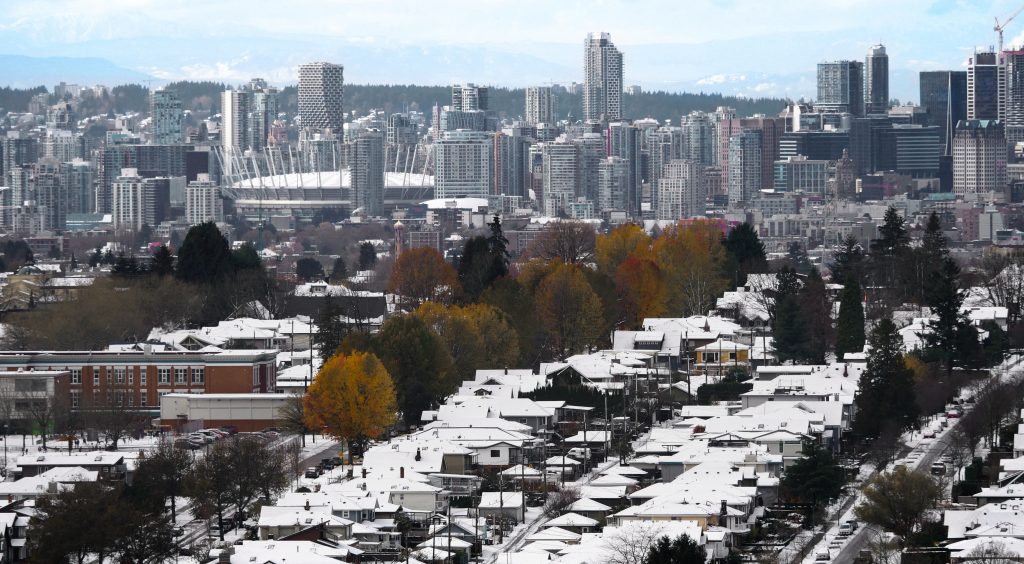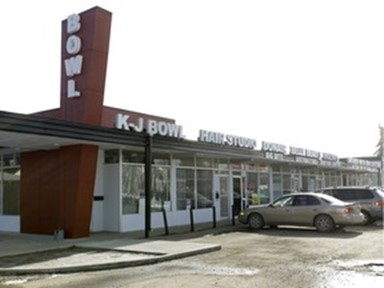Adaptive Reuse of Malls: The Future of Real Estate Canada?
Old shopping malls are undergoing a dramatic transformation in cities across Canada. Particularly in Vancouver and Edmonton, the redevelopment of these retail hubs is reshaping urban spaces and addressing evolving consumer demands in Real Estate Canada.

In Vancouver, the redevelopment wave is spearheaded by projects like Oakridge Park and Amazing Brentwood. The old Oakridge Centre mall is being converted into a sprawling 3,000-home urban village. This project meets the need for housing and revamps underutilized lands around the mall to create a complete community. Similarly, the Amazing Brentwood in Burnaby is revitalizing the shopping center and adding a residential high-rise. These developments signal a shift from traditional retail-focused malls to mixed-use districts that better align with modern lifestyles.
Edmonton real estate, too, is experiencing a mall redevelopment boom. West Edmonton Mall, one of the largest shopping centers in North America, is expanding its offerings beyond retail, focusing on entertainment, hospitality, and residential components. The mall’s vision extends beyond mere commerce to create vibrant, multifunctional spaces that cater to various needs.
As the best real estate websites in Canada navigate the ever-evolving landscape of urban development, we are witnessing a radical shift in property utilization. Specifically, Edmonton’s real estate sector is experiencing a transformative phase as old strip malls are reimagined into vibrant, multi-use properties.
Table of Content
The Revitalization of Edmonton’s Strip Malls
Edmonton’s strip malls have been subject to years of neglect. However, in collaboration with property owners, city planners initiated a program to breathe new life into these aging structures. In areas like Newton and Beverly, the revitalization efforts have sparked excitement among business owners.

The renovation of these strip malls has not only changed the physical appearance of the buildings. Still, it has also significantly boosted businesses, as they reported a surge in foot traffic, leading to increased revenues.
In Edmonton, the West Edmonton Mall transformed a vacant anchor space into a pioneering commercial adaptive reuse: a full-service car dealership, now claimed as the largest in a shopping center. Sears Canada’s departure prompted the mall’s owner to approach Mayfield Toyota.
The resulting West Edmonton Mall Toyota occupies 125,000 square feet, housing an expansive indoor showroom, outdoor vehicle storage, and a comprehensive service department with over 55 bays. Positioned within the mall, it offers convenient customer drop-offs and services during shopping.
This innovative initiative maximized space attracted foot traffic, and showcased the potential for reinvigorating commercial malls by creatively repurposing significant anchor spaces.
The Future of Retail in Canada
The Canadian retail landscape is shifting, leading malls to adjust. Traditional anchor stores give way to a blend of online shopping and physical outlets. This trend is reshaping store appearances and operations within malls.
Large anchor tenants, once crucial, are evolving or disappearing, prompting malls to explore innovative ways to maintain visitor numbers. Malls now emphasize distinctive and convenient experiences for shoppers, ensuring they find value in their interactions and purchases.
The Rise of Mixed-Use Properties
Canada’s focus on housing diversity and affordability finds a solution in repurposing mall sites. These projects introduce a mix of housing types and tenures to suburban areas, contributing to effective city-building. Developers are capitalizing on the “higher and better use” of land by adding residential components while retaining commercial spaces.
There is a noticeable increase in the demand for such renovated properties. The modernized façade and the promise of a vibrant community experience attract potential buyers and business owners looking at houses for sale in Edmonton.
The transformation of shopping malls into mixed-use properties is part of a broader trend of optimizing the use of existing properties. Given the pressing issue of housing shortage and affordability, housing has become a noticeable “higher and better use.”
For example, the Square One mall in Mississauga is being developed into an 18 million sq. ft mixed-use district with 18,000 residential units. This translates into more houses for sale in Toronto and the GTA.
The Underlying Models of Mall Redevelopment
There are two general models for shopping mall redevelopment. The first model involves the evolution of successful malls. The second model involves completely transforming standalone malls that are no longer viable.
Malls built in the automobile-centric era are now surrounded by underutilized lands, which present opportunities for creating more complete communities.
Canadian cities are pursuing distinct models of redevelopment. Some malls, like Oakridge Centre, remain successful and are integrated into more extensive community plans. Others, like the Galleria Mall in Toronto, are reimagined entirely, requiring careful phasing and community engagement. The ample parking lots of the Square One project are being transformed into a structure that complements the mall’s viability.
Successful redevelopment often involves opening the mall’s insular design to improve connections with surrounding neighbourhoods through public spaces and active transportation networks.
Challenges in Adaptive Reuse
Planning and designing mall redevelopments come with unique challenges. Experts underscore the importance of thoughtful phasing to ensure the viability of existing leases and retailers.
The sequence of development must consider the business and financial realities of retailers. Additionally, the design must focus on improving connections from the mall site to the surrounding communities.
Conclusion
Amid growing populations and housing demands, repurposing expansive mall spaces with large parking lots near cities emerges as a pragmatic solution. This adaptive reuse not only benefits urban planning but is also financially viable. This trend extends beyond urban areas, reaching suburbs in Edmonton, where mall redevelopment is gaining momentum.
As pioneers in this transformation, Vancouver and Edmonton are reimagining properties into distinct urban environments, addressing housing shortages and rejuvenating communal areas, aligning with evolving retail and urban dynamics. This successful strategy showcases how adaptive mall reuse can address housing challenges while revitalizing city living.
